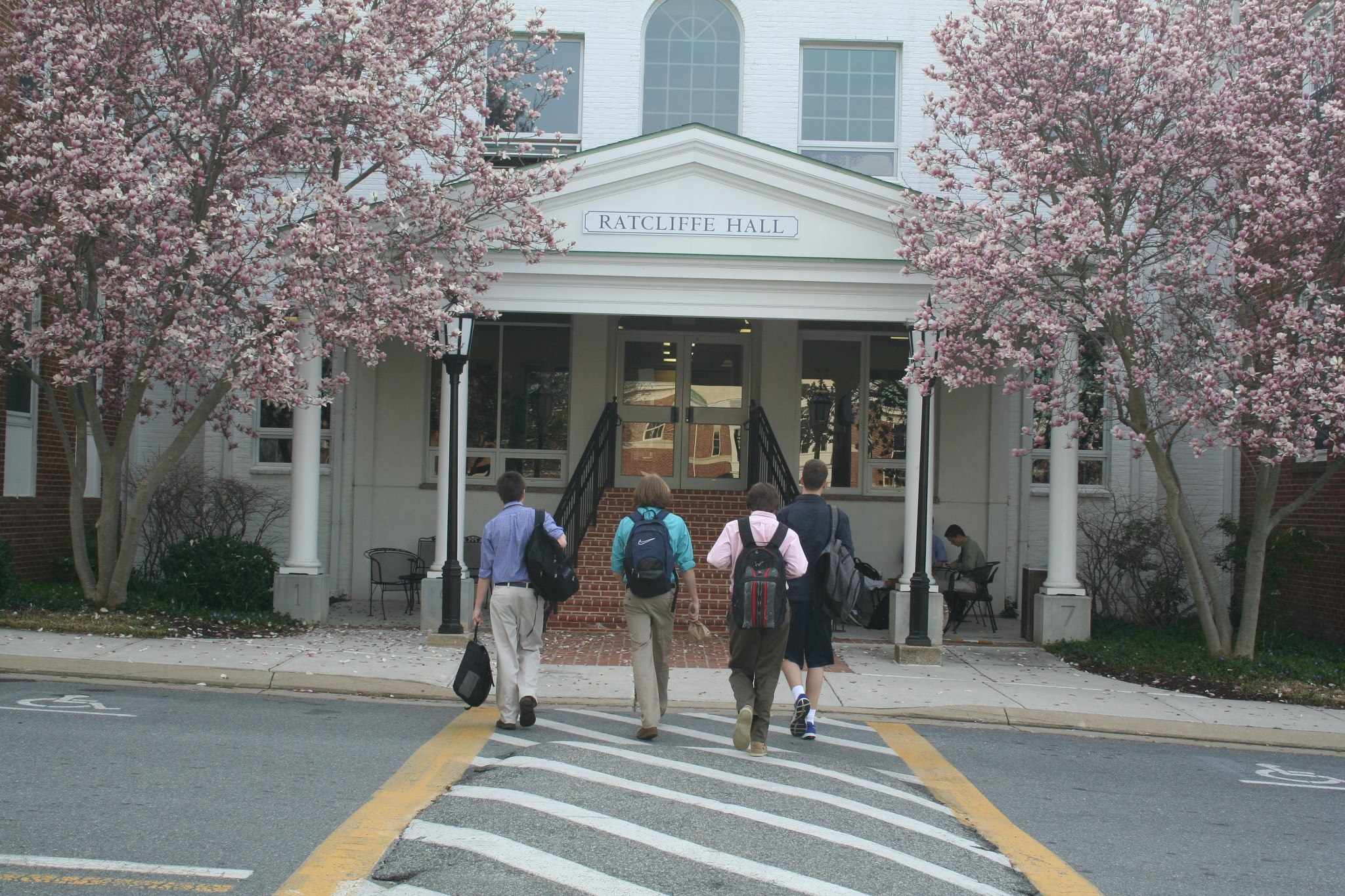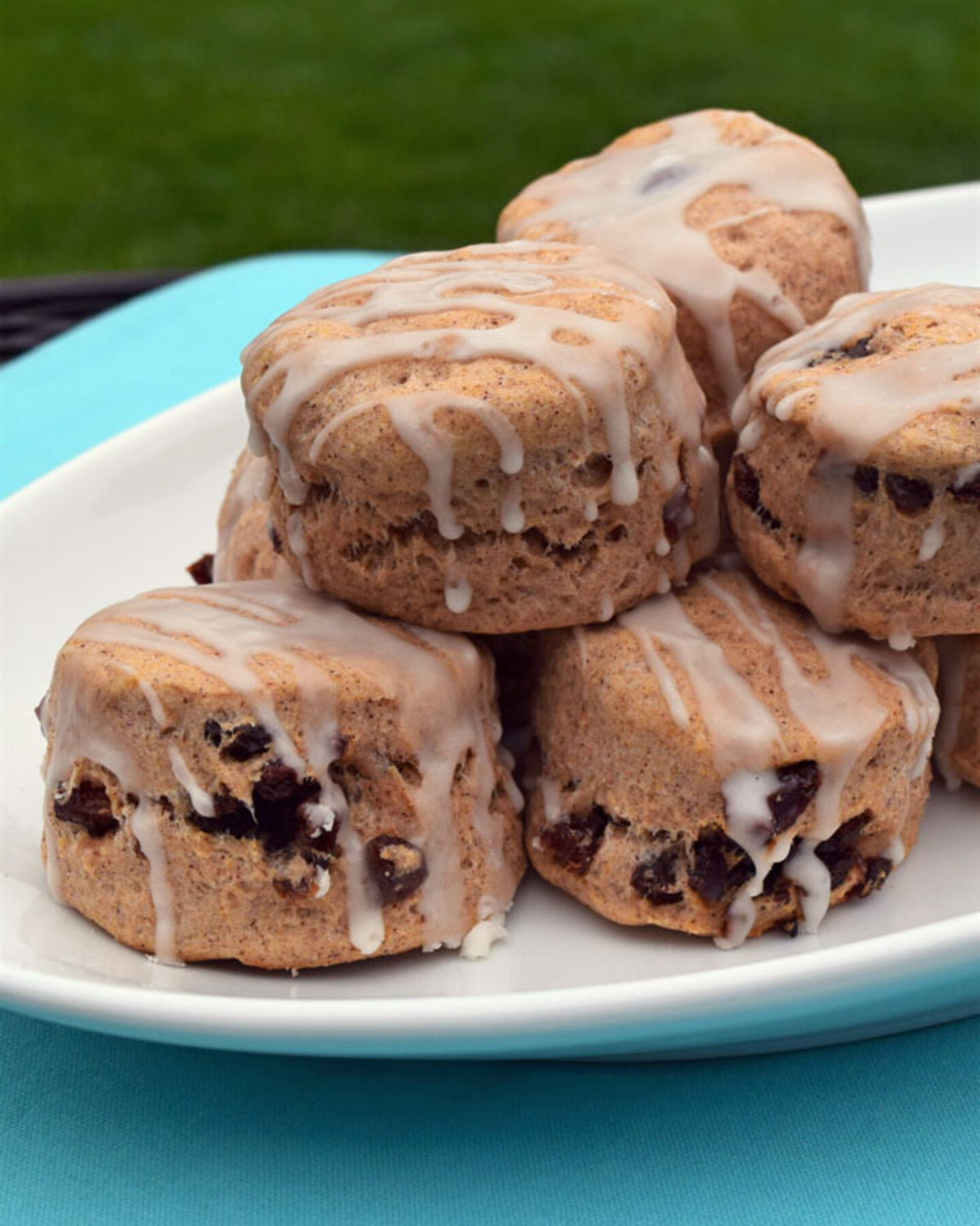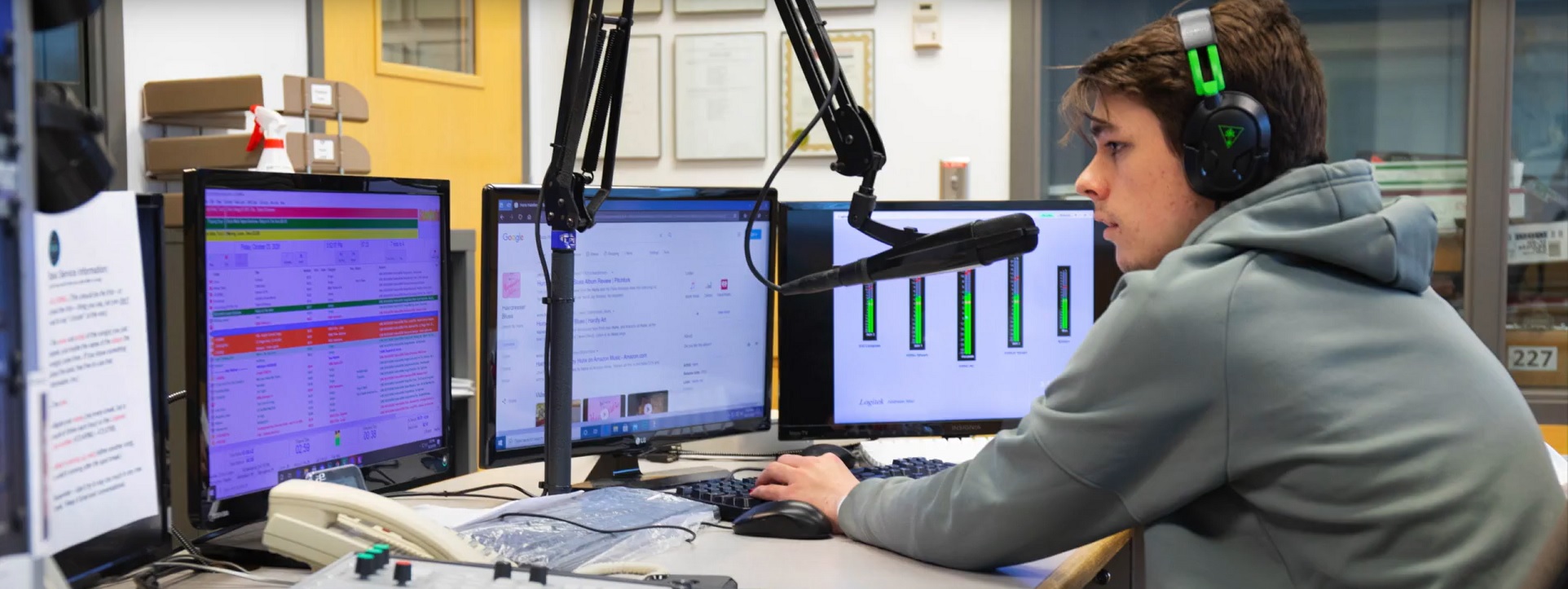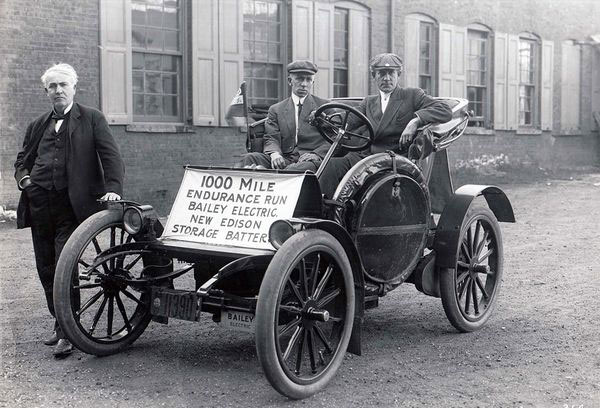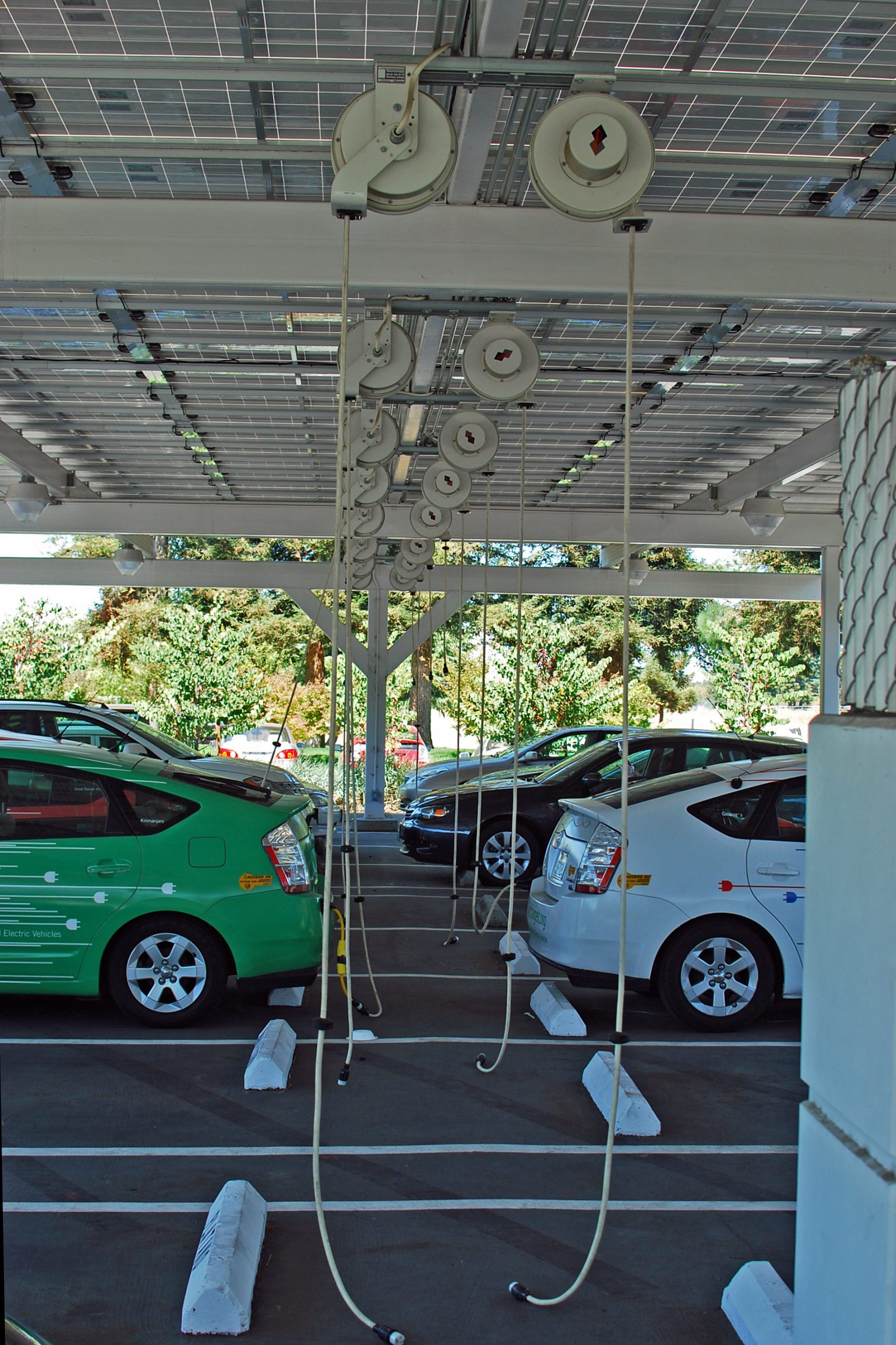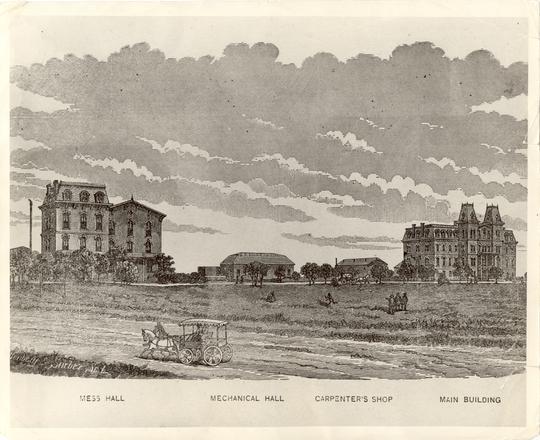Evensong “Simple Gifts”
- Home Page 79

Spring Salad
Do you want a fresh and healthy meal, but don’t have time to sit down? Look no further than North and South Dining Hall Grab and Gos!
Don’t forget to try one of the salads, they are our favorite! 🥗 pic.twitter.com/d833XeTnRq
— Campus Dining (@NDCampusDining) January 25, 2024
Mobility & Parking
Statement on the Electric Vehicle Zietgeist
University of Michigan Campus Transportation Master Plan
The Invention of the Wheel – The Journey to Civilization
Today we amble through the literature providing policy templates informing school district, college and university-affiliated transportation and parking facilities and systems. Starting 2024 we will break up our coverage thus:
Mobility 100 (Survey of both ground and air transportation instructional and research facilities)
Mobility 200 (Ground Transportation)
Police officer asks little girl for driver’s license.pic.twitter.com/8gVBiJNZiV
— The Figen (@TheFigen_) February 6, 2025
Mobility 300 (Air Transportation)
Mobility 400 (Reserved for zoning, parking space allocation and enforcement, and issues related to one of the most troublesome conditions in educational settlements)
Today’s session will be the last when we cover both land and air transportation codes, standards, guidelines and the regulations that depend upon all them. We will break out space and aerospace mobility into a separate session — largely because many universities are tooling up square footage and facilities in anticipation of research grants.
Public consultation originates from the following organizations:
International Electrotechnical Commission
International Organization for Standardization
Intelligent Transport Systems
Road Vehicles
Institute of Electrical and Electronic Engineers
Intelligent Transportation Systems Society
Society of Automotive Engineers (SAE International)
Like many SDO’s the SAE makes it very easy to purchase a standard but makes it very difficulty to find a draft standard open for public review. It is not an open process; one must apply to comment on a draft standard. Moreover, its programmers persist in playing “keep away” with landing pages.
Technical Standards for Road Vehicles and Intelligent Vehicle Systems
International Code Council
National Fire Protection Association
Association of Transportation Safety Information Professionals
International Light Transportation Vehicle Association
Non-Emergency Medical Transportation Accreditation Commission
Noteworthy:
The public school bus system in the United States is the largest public transit system in the United States. According to the American School Bus Council, approximately 25 million students in the United States ride school buses to and from school each day, which is more than twice the number of passengers that use all other forms of public transportation combined.
The school bus system is considered a public transit system because it is operated by public schools and school districts, and provides a form of transportation that is funded by taxpayers and available to the general public. The school bus system also plays a critical role in ensuring that students have access to education, particularly in rural and low-income areas where transportation options may be limited.
Something is always happening in this domain:
A Quiet Rollout: Electric Scooters on Campus
Notre Dame Police Department shares gameday parking restrictions, tips
Electric School Bus Market Size, Industry Share, Analysis, Report and Forecast 2022-2027
Non profit associations proliferate:
American School Bus Council
American Bus Association
Campus Parking and Transportation Association
National Association for Pupil Transportation
National Association of State Directors of Pupil Transportation Services
National School Transportation Association
School Bus Manufacturers Association
…and 50-state spinoffs of the foregoing. (See our ABOUT for further discussion of education industry non-profit associations)
There are several ad hoc consortia in this domain also; which include plug-in hybrid electric vehicles. Charging specifications are at least temporarily “stable”; though who should pay for the charging infrastructure in the long run is a debate we have tracked for several revision cycles in building and fire codes.
Because incumbents are leading the electromobility transformation, and incumbents have deep pockets for market-making despite the “jankiness” of the US power grid, we can track some (not all) legislation action, and prospective public comment opportunities. For example:
Keep in mind that even though proposed legislation is sun-setted in a previous (116th) Congress, the concepts may be carried forward into the following Congress (117th).
Public consultations on mobility technologies relevant to the education facility industry are also covered by the IEEE Education & Healthcare Facilities Committee which meets 4 times monthly in European and American time zones.
This topic is growing rapidly and it may well be that we will have to break it up into more manageable pieces. For the moment, today’s colloquium is open to everyone. Use the login credentials at the upper right of our home page.
Transport Security
Great but she's not safe on that public transport pic.twitter.com/sjqrMoY9Rt
— The Aureus Press (@Trad_West_Art) November 6, 2025
Whole Wheat Cinnamon Raisin Biscuits
Statement of Financial Statement 2024: $5.191B (Page 26) | Standards Nebraska
These views can’t come soon enough 🌸 pic.twitter.com/2DIBfkAhEs
— University of Nebraska-Lincoln (@UNLincoln) March 21, 2025
The Princeton Review has rated NEBRASKA among nation’s best institutions for undergraduate education ›› https://t.co/b82EdI0pyh. #UNL pic.twitter.com/osKkqR3xJn
— University of Nebraska-Lincoln (@UNLincoln) August 1, 2017
“Summer Suns Are Glowing”
Written by William Walsham How in 1871 for the Church Hymns collection, this Christian standard is a celebration of God’s creation and love, set to the tune “Ruth” by Samuel Smith (1865). How, an Anglican bishop known for his pastoral work, crafted the hymn to reflect the joy of summer, with its vibrant imagery of glowing suns, flowing light, and nature’s voices uniting in praise.
The hymn’s four stanzas emphasize God’s mercy, eternal love, and guidance through life’s challenges, urging steadfast faith even in dark times. Its meaning centers on gratitude for divine providence, the beauty of creation, and trust in God’s presence, with the final stanza affirming hope in eternal light.
Published in over 239 hymnals, it remains a cherished expression of summer’s warmth and spiritual reassurance.
Akua Akyere Memorial Youth Choir
It’s happening today 5pm @icgczoetempleC5. Don’t miss out🔥🔥🔥🔔🔔🔔 pic.twitter.com/bioJY0qxV8
— Akua Akyere Memorial Youth Choir (@AKEMChoir) November 28, 2021
Electric Vehicle Charging
GROUP A MODEL BUILDING CODES: Comments on Committee Actions will be received until July 8th
International Building Code Chapter 4, Section 406.2.7
Free public access to the 2021 edition of the International Energy Conservation Code (IECC) is linked below:
2021 International Energy Conservation Code
Electric vehicle charging stations are addressed in the 2024 International Energy Conservation Code (IECC) within two specific appendices:
Appendix RE: This appendix provides detailed requirements for electric vehicle charging infrastructure, focusing on both residential and commercial buildings. It includes definitions and infrastructure standards to ensure that new constructions are equipped to support electric vehicle charging
Appendix CG: This appendix offers guidance on electric vehicle power transfer and charging infrastructure, emphasizing the integration of EV-ready requirements into building designs. It outlines the necessary provisions for installing and managing EV charging stations, ensuring compliance with energy conservation standards
.These appendices are part of the broader efforts to incorporate EV infrastructure into building codes, promoting energy efficiency and supporting the transition to electric vehicles.
This standard will be updated within a reconfigured code development cycle linked below:
2024/2025/2026 ICC CODE DEVELOPMENT SCHEDULE
Keep in mind that many electric vehicle safety and sustainability concepts will track in other titles in the ICC catalog. It is enlightening to see other energy related proposals tracking in the most recent Group A code revision cycle
The following proposals discussed during the Group A Hearings ended earlier this month are noteworthy:
IBC § 202 (NEW) | G66-21 | Electrical mobility definitions
IBC § 1107.2, et al | E124-21 & E125-21 & E126-21 | Electrical vehicle charging stations for R-2 occupancies.
From the Group B revision cycle — COMPLETE MONOGRAPH:
R309.6 Electric vehicle charging stations and systems. Where provided, electric vehicle charging systems shall be installed in accordance with NFPA 70. Electric vehicle charging system equipment shall be listed and labeled in accordance with UL 2202. Electric vehicle supply equipment shall be listed and labeled in accordance with UL 2594.
IBC 406.2.7 Electric vehicle charging stations and systems. Where provided, electric vehicle charging systems shall be installed in accordance with NFPA 70. Electric vehicle charging system equipment shall be listed and labeled in accordance with UL 2202. Electric vehicle supply equipment shall be listed and labeled in accordance with UL 2594. Accessibility to electric vehicle charging stations shall be provided in accordance with Section 1108.
TABLE R328.5 MAXIMUM AGGREGATE RATINGS OF ESS (Energy Storage Systems) – PDF Page 1476
Incumbents are socking in EV concepts all across the ICC catalog. We refer them to experts in the Industrial Applications Society IEEE E&H Committee.
One of the more spirited debates in recent revision cycles is the following:
Who shall pay for electrical vehicle charging infrastructure?
The underlying assumption is that the electrification of the global transportation grid has a net benefit. We remain mute on that question; the question of net gain.
Of course, many proposals pointed the finger at the stakeholder with the deepest pockets. Accordingly, new commercial building owners will be required to install charging stations for new buildings. During 2018 and 2019 we tracked the action in the workspace below so that we could collaborate with the IEEE Education & Healthcare Facilities Committee:
2021 Electric Vehicle Infrastructure
Given that most higher education facilities are classified as commercial, the cost of charging stations will be conveyed into the new building construction budget unless the unit takes an exception. Generally speaking, most colleges and universities like to display their electric vehicle credentials, even if the use of such charging stations remains sparse.
Issue: [11-40]
Category: Electrical, #SmartCampus
Colleagues: Mike Anthony, Jim Harvey
* The education industry has significant square footage this is classified as residential; particularly on the periphery of large research campuses.
LEARN MORE:
ICC 2021/2022 Code Development Cycle
The Top 5 Energy Efficiency Proposals for the 2021 IECC
Strawberry Daiquiri Cocktail
Founded in 1999, the European Bartender School (EBS) is the world’s leading bartending school, operating over 25 schools across five continents. Its mission is to provide top-quality, globally recognized bartending and barista courses designed by industry experts.
EBS aims to train aspiring bartenders with practical and theoretical skills, offering a comprehensive International Bartender Course that equips students for global career opportunities. With over 80,000 graduates, EBS fosters a vibrant community, connecting students to jobs via EBS MatchStaff. The school emphasizes a fun, social learning experience, blending professional education with personal growth and travel
Our current students on their first night out. What a backdrop! #😍 #EBSLondon #EuropeanBartenderSchool #NightOut #TowerBridge pic.twitter.com/mriXqr6Iq2
— London EBS (@London_EBS) September 17, 2018
KANM Student Radio
KANM Student Radio, founded in 1973 at Texas A&M University, began as Student Government Radio, broadcasting via cable on 107.5 FM in partnership with Mid-West Video Corporation. Initially airing from 4 p.m. to 2 a.m. weekdays, it offered diverse genres like hard rock and country. Despite early financial struggles, accumulating $5,783.64 in debt by 1977, KANM grew its influence through the 1970s and 1980s, facing technical issues like outages in 1978 and 1979.
It became independent in the 1980s, moving to the Pavilion complex in 1983 with equipment donations. KANM pioneered online streaming in 1998, transitioning to online-only by the mid-2010s. In 2024, it secured a low-power FM permit (KAGZ-LP 95.5 FM), marking a return to airwaves. Now located in the Memorial Student Center, KANM remains student-run, promoting non-commercial music and hosting events like the bi-annual “Save the Music” concert.
Howdy! I am so stoked to announce that we recently got to work with The Highway 6 Band, a sick group based out of College Station, to produce a KANM Library Session!!
Here’s a quick clip of the band performing their original song “Me or the Road” 🔊 pic.twitter.com/0lWpzZhFDU— KANM Student Radio (@KANMRadio) March 24, 2023
New update alert! The 2022 update to the Trademark Assignment Dataset is now available online. Find 1.29 million trademark assignments, involving 2.28 million unique trademark properties issued by the USPTO between March 1952 and January 2023: https://t.co/njrDAbSpwB pic.twitter.com/GkAXrHoQ9T
— USPTO (@uspto) July 13, 2023
Standards Michigan Group, LLC
2723 South State Street | Suite 150
Ann Arbor, MI 48104 USA
888-746-3670


